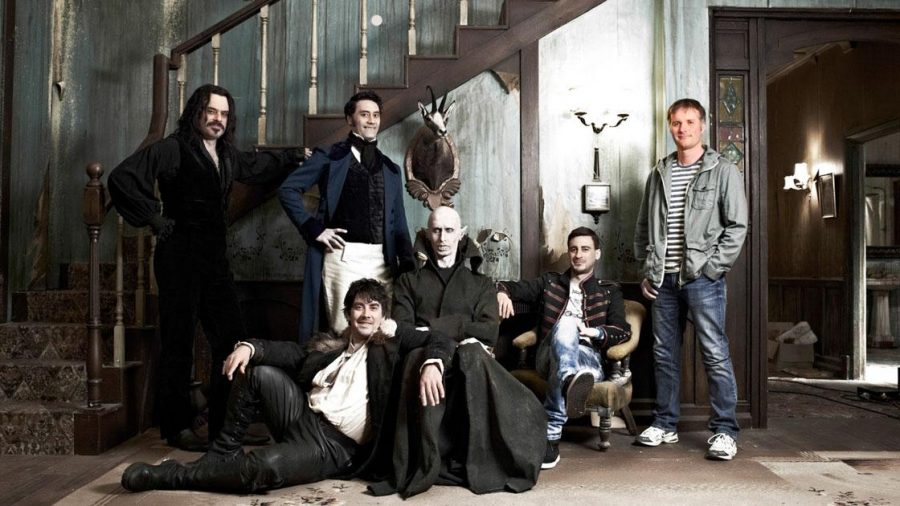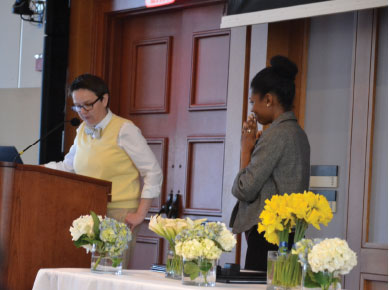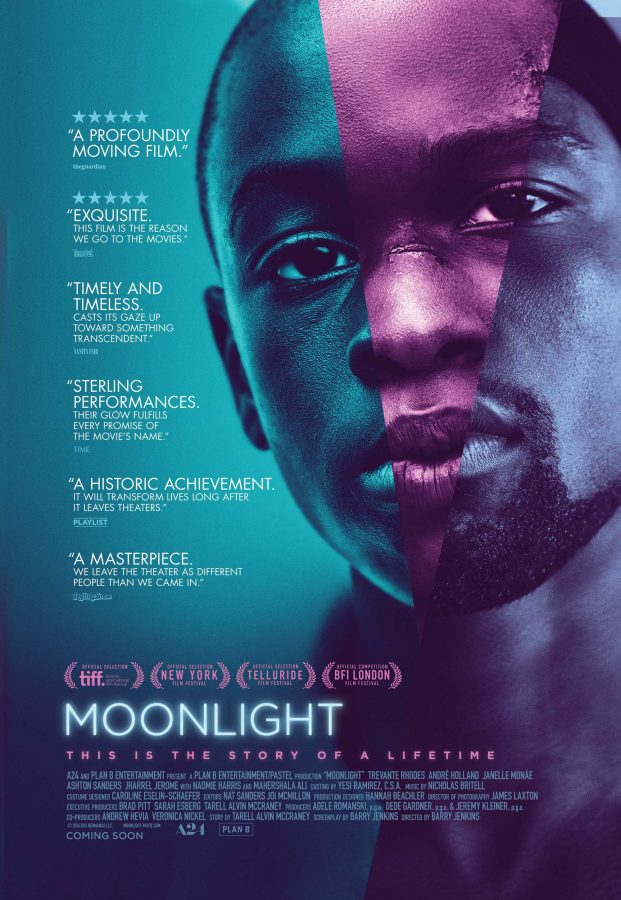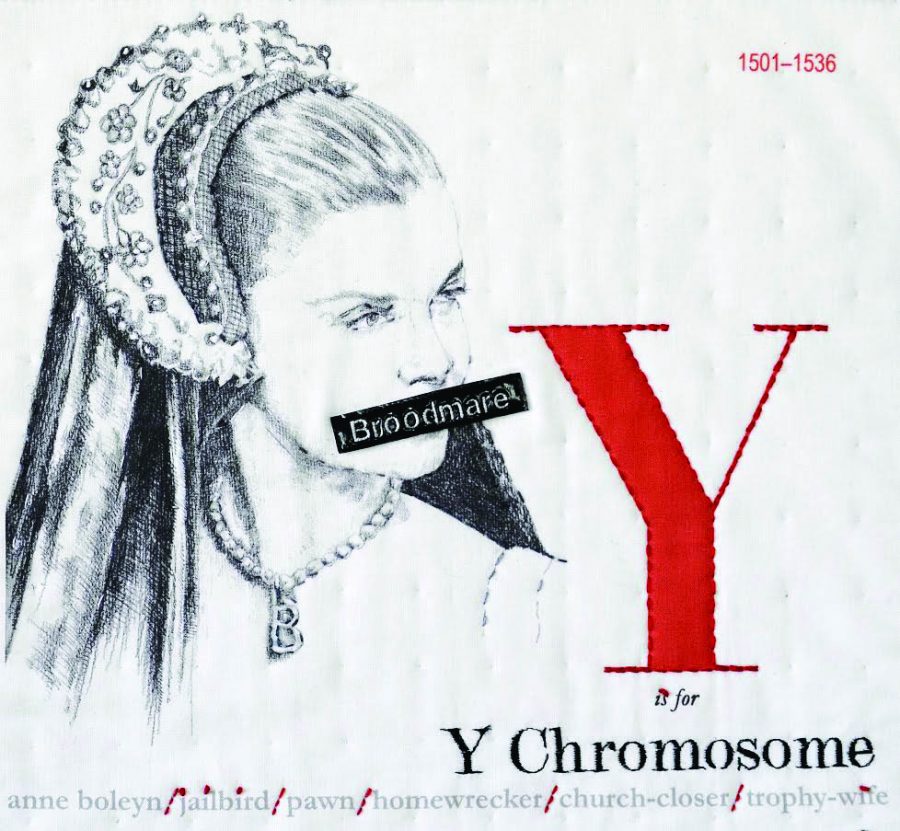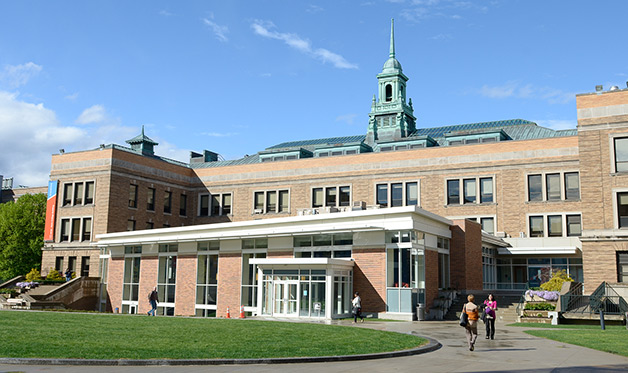By Ruthy Rickenbacker
Staff Writer
Dino Rowan Traite is sort of famous.
The 19 year old is a photography student at Montserrat in Beverly, Mass. It’s a running joke among his friends that he knows every LGBTQ person in the state.
Outgoing, Traite meets people wherever he goes. Outspoken, he reaches many more online.
Traite is an activist video blogger who educates readers about being transgender. With his videos and photography, he has documented his own female-to-male (FTM) transition to raise awareness about trans identities.
“I’m not your typical ‘going to rallies’ kind of activist,” says Traite, although he’s packed with energy and always on the go. “I speak through my art.”
In his favorite black skinny jeans, sturdy gray boots, and a T-shirt with cats on it, Traite admits he’s kind of a hipster. At 5’5”, he’s a thin guy with a scruffy beard and a round piercing centered just below his bottom lip.
Because it’s finals week, Traite’s artwork is all over his one-bedroom attic apartment in Beverly, a five-minute walk from the college. One of his current projects is a location-based sculpture, a change from his usual photography. He’s using layers of cardboard to construct a large flat-screen TV, a mini-bar complete with empty bottles he gathered from friends, a freestanding fireplace, and a chimney reaching from floor to ceiling.
While he talks, he steps around the milk crates, cracker boxes, dustpan, disconnected fire alarm, socks, cups, books, and duct tape covering his floor, stacking unused cardboard against the chimney.
“Pre-T, before surgery, a lot of my art was about my gender,” says Traite, referencing the testosterone he’s been taking for two years and the surgery he had in July to reshape his chest. “I didn’t intend it to be, but it kind of ended up being that way because I was dealing with it.”
In high school in his native Waltham, MA, Traite was the only “out” transgender male. “In high school, I was such an activist, you know, scream and shout,” he says. In college, he felt he “needed a break” from educating people about his identity all the time. It also wasn’t necessary to scream and shout, because after testosterone and surgery, people are less likely to question his gender identity. He doesn’t need to explain himself anymore.
Traite started recording videos about his transition before he started on testosterone, a hormone many FTM transpeople choose to take. His blog, called “The Transition Blog of Dino Rowan,” covers everything from personal posts about his experience to answering questions from readers about health insurance for trans-related medical needs. Last month, he posted a video celebrating his two-year anniversary of starting on testosterone.
Aside from his blog and sculpture final, Traite is working on several photography projects. “I’m always doing different kinds of stuff in school. I’m learning new things, and think oh, this is really cool, let’s experiment with this,” he says. It’s also the way he lives his life. Traite has been an active person since he was a kid, when he took karate and was “always running around.”
Some of his recent shoots have been at night, playing with his external flash and car’s headlights to create unusual portraits of friends and himself. “I was in Amherst visiting some friends at UMass and we went to an abandoned industrial park,” says Traite. “We were gonna set some fires, but actually we did some stuff with our cars and the flashes that I had. I like working with a lot of external light stuff, to see what tricks I can do with it.” The series came out with figures outlined in light, breaths visible in the cold air.
Some of his favorite shoots deal with gender, including one with his friend Jacob, a tutu, and a wig. “He said he always wanted to be a princess when he was little. He’s a very hairy guy,” says Traite. “I photographed him in the process of going from his normal self to princess Jacob.” The final photos in the series feature Jacob in a pink tutu posing like a ballerina, and wearing a ruffled cream-colored dress with a long, brown wig. Traite calls it “The Hairy-tale Princess Series.”
On his blog, his work is often more serious and personal. He writes about how he came to know he was transgender, from his tendency towards boyish hobbies as a child to realizing that his body wasn’t right for him. He writes about his mother, who supports him completely, and about his complicated relationship to his breasts before surgery. “I recognize that I want them gone. But I also recognize that for nineteen years I have embraced them as part of me,” he writes.
He also writes more informational posts, often responding to messages from his nearly 2,000 readers. Traite answering questions about how he got his health insurance to cover his surgery and what kinds of changes happen when a person starts on testosterone. He posts resources as well, including a healthcare guide for transpeople from a Canadian organization.
For Traite, the blog is also about recording his transition for himself. “There’s a couple things I’m thinking about when I make my videos, and one is for my own documentation,” he says, admitting that he’s not sure how he will feel about it five or ten years down the road. “Speaking to the camera, speaking to yourself… It’s like a video diary for our generation,” he says. “What am I gonna feel when I look back at these?”
Aaron Wolfson, who has known Traite for three years through the Boston Alliance of LGBT Youth, says his favorite part about the blog is the photography. Traite posts self-portraits throughout the blog, including a powerful post-operation series in which he wears a compression vest and a drain on each side of his chest.
“When I think of Dino, I think of perpetual energy, creativity, and force,” says Wolfson. “Watching him evolve and grow into himself has been really exciting.”
For others, the blog has been a crucial tool for self-education about what being transgender means. A few months ago, Traite got a message from a reader who had known him through some friends in the past. “She said she hadn’t been really respectful of transpeople because she didn’t really understand them, but she watched my videos and read my blog and she said, ‘I just want to thank you for being so out there,” says Traite. “I know I have a presence, but I don’t know the impact it has on people.”
Finished with his sculpture work for the night, Traite heads over to one of Montserrat’s studios, giving his guest a tour. The building is bright and spacious, covered in student prints, paintings, and drawings. Even at 10 p.m. on a Monday, a few students are working in every room. Traite knows them all by name and stops by each to chat. At the photography studio, in the basement of the building, Traite spreads his arms wide and says, “This is my home.”
He says he might be done with the blog, for a while. He’ll be on to answer questions from readers, but he doesn’t anticipate a lot of personal updates any time soon. “I kind of just exist. I guess it’s kind of how I’m living my life,” says Traite. “I just exist. I don’t need to scream and shout.”



